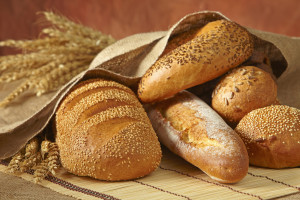Through science we are learning a great deal about the conditions needed for a healthy human body such as those listed below:
• Nutritional needs that allowed our ancestors to begin and thrive some 2.5 million years ago.
• Energy production by our mitochondria at a cellular level.
• Lifestyle, movement, and environmental factors that determine how our genes will express themselves.
• Symbiotic bacteria living in our gut microbiome that facilitate so many of the biological processes needed for our survival.
Science, the support of research and communication of those findings will be our best ally for long-term and the healthy survival of our species. In this post, I will communicate what we have learned about chronic inflammation.
Some 10,000 years ago, we deviated from a diet that supported our immediate biological needs to one that supported growth of our societal needs. We probably would not have the advancements we enjoy today i.e. communication, transportation and engineering feats like wind power to name a few without that shift in diet. Farming and the consumption of grains allowed our species to expand in population across the globe and create cultures, but at a cost to our personal health. Health issues such as cancer, diabetes, obesity, cardiac diseases, some mental health diseases, gastrointestinal diseases and many other autoimmune diseases all have one thing in common: inflammation.
and the consumption of grains allowed our species to expand in population across the globe and create cultures, but at a cost to our personal health. Health issues such as cancer, diabetes, obesity, cardiac diseases, some mental health diseases, gastrointestinal diseases and many other autoimmune diseases all have one thing in common: inflammation.
We recognize inflammation as a natural response for healing when we injure ourselves. A skin cut, a sprained ankle, a tooth ache all benefit from inflammation as a form of healing. These are examples of acute inflammation which by nature are short in duration. But what about chronic inflammation? Inflammation that our body endures perhaps over a lifetime and causes diseases for which antibiotics give no cure. How does this happen?
Nutritional science has taught us that grains cause injury to our root system. That system, our gut, is the very structure that allows us to take in nutrients from the foods we eat to support our life at a cellular level. Grains have a defensive component within their seeds called phytic acid; that binds minerals such as magnesium, calcium, zinc, iron, etc. which keeps our bodies from being able to absorb these vital nutrients. In addition, grains can open up the tight junctions between the cells in our small intestine because of a substance called gluten and allow undigested plant proteins to enter our blood stream. Our immune system will mount an attack on these proteins including bacteria and viruses as they enter our blood stream. Some of these plant proteins resemble our own cells and cause our immune system to not recognize self from the invader.
“He that takes medicine and neglects diet wastes the time of his doctor.”
– Ancient Chinese Proverb
As a Western culture, we continue to consume grains (gluten) and perpetuate inflammatory conditions; science now recognizes about 160 autoimmune diseases. The disease name may account for its manifested location, but its origins are derived from consuming the gluten found in grains.  The modern processed foods we know as bread, beer, lunch meat, and pasta are all sources of gluten and should be avoided to protect us from an autoimmune or life threatening condition.
The modern processed foods we know as bread, beer, lunch meat, and pasta are all sources of gluten and should be avoided to protect us from an autoimmune or life threatening condition.
For a comprehensive list of products containing gluten, check out The Paleo Approach: Reverse Autoimmune Disease and Heal Your Body by Sara Ballantyne, PhD.
Click here to read more about Inflammation.
Click here to return to the post on Grounding.
Click here to return to the post on the Benefits of Massage.
Click here to return to post on Eight Habits.
Click here to return to post on Crohn’s disease.
Click here to return to post on The Fattening of America.
For my next post, I will cover the cell’s mitochondria and those conditions that inhibit energy production.
If you would like to share your comments about this post, then please contact me at myorigins@kenpledger.com or leave a comment below.
If you found the information helpful, please share with your friends and family.